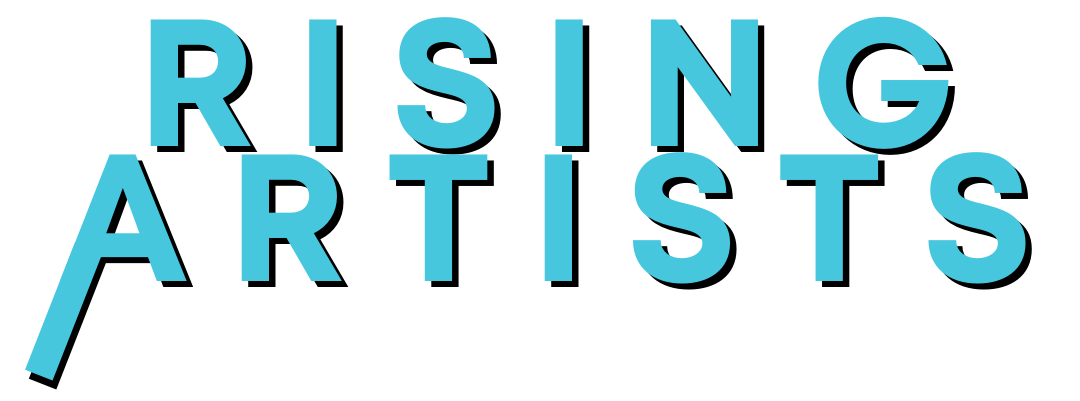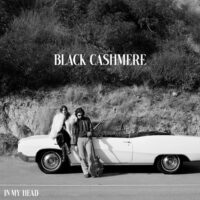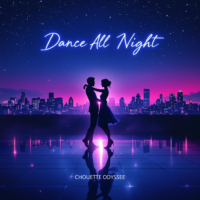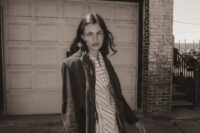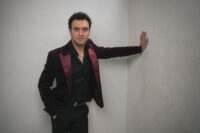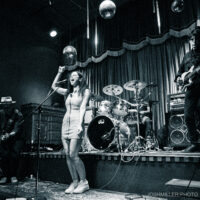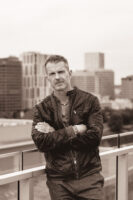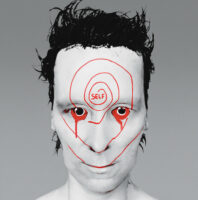Q: I love the 70s and 80s disco sound in “Forest” and I’m sure a lot of people are going to get hit with nostalgia because of it. What influenced you to sort of explore another decade in this song?
S.A.A.R.A: Well I have to own up and say it wasn’t too much of a conscious decision as I would probably describe myself as being stuck in a musical time warp!! Growing up, I listened to a real mix of music; from 60s RnB and soul, 70s funk and disco, 80s new wave and pop and 90s DnB and Jungle. In setting up this project all I knew is that I wanted people to be dancing their socks off at our shows. The rest kind of happened by osmosis—a culmination of a broad range of influences.
Q: This song is so energetic and sexy because it’s infused with different genres like indie and new wave. What was your goal in writing “Forest”?
S.A.A.R.A: With “Forest,” I wanted to create something that felt really immersive. I wanted to play around with sounds, approaching them as textures that would paint a complete experience for the listener. Each layer has a character—from the growling and murky synth through to the flute and piano that bring an element of magic. At the time of writing, I was studying an MA in experimental music and was really interested in the fault line between the IRL and URL (in real life and the online world). By having electronic sounds fuse into organic sounds, like the woodwind and the vocals, I wanted to exploit the demarcation between the digital and the analogue.
Q: What got you into EDM?
S.A.A.R.A: I guess my love of raving. I remember the first time going to fabric for a DNB night. Up until then, most of the dancing I did was at indie club nights and at gigs (when it was still ok to dance at gigs rather than stand about looking cool), but there was something about raving in a massive warehouse style space with thousands of people that really hit me. Everyone in their own little worlds but sharing the same experience of the music. Dancing was almost automatic—the beat, the breakdowns and the drops commanded you to move. Earlier than all that, I remember hearing “Running Up That Hill” by Kate Bush for the first time. I was instantaneously hooked by the drum beat. I loved how the rigidity of the electronic drums is a real feature of the track. It was certainly an inspiration when writing “Forest.”

Q: You’ve used your talents in different projects with Ezra Bang and Hot Machine, City Lights, Ash Walker, and Westerman, how were those experiences and what did you learn from them?
S.A.A.R.A: Working with each of these projects definitely gave me a little something to take with me, enabling me to finally have the confidence to make the music I want to make. City Lights, formed in a secondary school classroom in Camden, was the first band I was in. Prior to that, I had never considered playing bass or being in a band. We cut our teeth on the Camden gig circuit playing songs that we had written together in a damp basement studio in Stoke Newington. It was a real labor of love and completely DIY. We even set up a record label for female musicians, albeit briefly, called Pushing Pussy Records that we ran with The Fairies Band. Through this, I learnt the value of owning your narrative, especially as a woman, when working in the music industry. Joining EZRA BANG and Hot Machine was a whole new level to being in a band—amongst the early shows I played with them was a support slot with Pubic Enemy!! We had some amazing times playing huge gigs and festivals . I learnt a lot about focus; just because the music you make is a huge party, doesn’t mean that’s what’s happening 24/7 behind the scenes. To get the work, you have to show up with your head clear and sharp. I also learnt the value of holding onto the groove, even when a shirtless man jumps on stage to do pushups at your feet while I’m mid bass riff!! Working with amazing producers and songwriters like Ezra Bang, Ash Walker and Westerman gave me an invaluable glance behind the emerald curtain, particularly when it came to the production process and how production can really transform a song. I’m not a huge tech head so the thought of self-producing my own music was initially super daunting, but working with other producers and songwriters along the way enabled me in finding my own way of working and my own sound.
Q: How has music impacted your life?
S.A.A.R.A: I’ve always found solace in music—for good times and the not so good times. Singing is also such a great release—probably why I end up singing when stressed which is fine when you work from home, but not so much otherwise. Music has had an astronomical impact on my life—particularly now that I have finally stepped up and started doing what I always wanted to do musically. Taking ownership of my creative calling caused me to face up and challenge limiting self beliefs but most importantly, find a voice to speak my truth and take up space. As a woman who is black, this is not an easily done thing. Even in bringing this project to life, I had to learn how to stick to my guns and not get derailed by people keen to tell me “that’s not how you write a good song”!

Q: What do you want the world to know about S.A.A.R.A?
S.A.A.R.A: Oh, tough question! I guess I would want the world to know that I am a strong believer in the need for diversity in the creative arts in the form of whose voices we get to hear, whose faces we get to see and the stories and perspectives that should be part of the narrative. I find the prescriptive approach, particularly in the word of popular music, so limiting. All the caveats and hoops artists are expected to adhere to and jump through has led us to a place of blandness—everything sounds the same as it’s a guaranteed way to get playlisted on the major stations. It’s really disappointing. I believe in innovation and challenging the status quo. Art is art! The artists who have stood the test of time made work that really challenged the hegemony of the art world, artists like Prince, David Bowie, Bjork. I’m not really interested in making stuff according to whoever decided that a song should be 3 minutes long with a verse, chorus and a bridge. The song, in my view, is the result of creative exploration—it gets to be whatever it wants to be and, much like the music I make, I want people, myself included, to feel free to be whatever they want to be.
Interviewed by Taylor Berry
